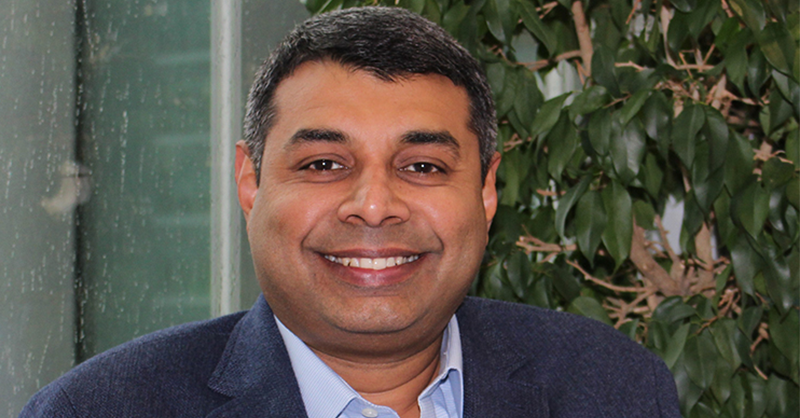Financial access for all – is it within reach?

Banks have a key role to play by enabling greater financial access for all. Ram Devanarayanan, head of business consulting Europe, at Infosys Finacle, explains how political support combined with the adoption of marketing activities led by AI and machine learning technologies can help the industry increase financial inclusion and maintain a return on investment.
The lack of financial access for all continues to vex politicians and pressure groups. But there is no doubt that being able to access a bank account and credit services is now essential at both the individual level and as an engine of economic growth. How can the industry help to reduce the unbanked populations of the world?
Globally, the unbanked population is estimated at around 1.7 to 2 billion people – perhaps 25% of adults. Without access to banks and credit, even simple transactions may be out of reach. In a world where cash is being replaced by electronic exchange, what we now see as basic services such as cell phone and internet subscriptions, soon become inaccessible.
For banks, though, adding millions of accounts can be an unattractive prospect. Every account brings cost, and the industry is reluctant to encourage mass onboarding where there is low or zero perceived return on investment.
The cost equation suggests either state incentives, on the basis that government outlay will be repaid by economic growth and the tax it generates, or a dramatic reduction in account costs that will create a positive commercial incentive to recruit new customers.
Lessons from beyond Europe
Unbanked population percentages vary widely across geographies. In 2021, some 6% of the population in France, Italy and Spain were without access to the services of banks or similar organisations, 20% in China and India, and 71% in Morocco.
In India, the government-mandated Unified Payments Interface (UPI) has enabled a simple pathway to banking services. By establishing a common, low-cost payment standard for cards and mobile transactions, it becomes easy for traders and customers to join the banking system and establish a financial history – essential steps towards full banking participation. With India’s population forecast to grow to 1.7 billion in 2050, this implies banking access for an additional 300 million people.
From the state point of view, investment in UPI could bring significant rewards. Over the long term, the Indian economy is expected to grow by more than 3% a year, with some predictions of 5% and higher. UPI addresses one of the key obstacles to this growth, by reducing the entry cost for new customers, and potentially increasing the return on investment for the banks.
Reducing onboarding and account costs
Even as it becomes easier to join the banking system through initiatives like UPI, bank servicing costs will continue to come down. Current accounts (checking accounts in the US) are unlikely to be profitable unless banks charge fees, a major disincentive for unbanked populations who tend to be in the lowest income sectors.
Without doubt, costs are decreasing, largely thanks to technology. The latest AI-powered chatbots can answer basic customer questions rapidly and effectively, enabling existing human staff to serve far larger numbers of accounts. And chatbots are still only in the foothills of progress; advances such as ChatGPT show that large swathes of interactions will in future be handled by AI.
Scalability, though, will bring diminishing returns. In the Indian example, while adding 300 million accounts to 1.4 billion existing ones will certainly reduce the average cost-per-account, it does not solve the challenge that many of the new accounts will produce very low returns.
Data, data, data
For banks, the missing component is surely data. With the power to collect and analyse data effectively, at scale, offerings can be tailored to customers to generate positive returns. Fintechs have shown how data can be used to develop profitable niche offerings based on deep understanding of customer behaviour, and non-banks such as Facebook, Amazon, Apple, Netflix and Google (often called FAANG) are similarly exploiting data to drive revenue. Across millions of accounts, even small improvements in data quality and targeting can deliver big results.
Put another way, banking access for all could be considered as a marketing problem rather than a cost problem. As account onboarding and transaction costs continue to reduce, the comparative value of behaviour data increases. In the same way that Amazon suggests related purchases, the developing art of financial marketing – still in its infancy compared with the capabilities demonstrated by FAANG – will help create return on investment.
Many legacy banking systems were designed purely with transaction efficiency in mind. The latest solutions not only deliver improved efficiency, but also include the data capture and analysis that will drive the future. Working on vast datasets, technologies such as artificial intelligence (AI) and machine learning (ML) can help identify opportunities and ensure that onboarding very large numbers of accounts becomes a revenue-generating possibility.
Financial access for all
The hurdles facing unbanked individuals are gradually being removed by a combination of political support and technological advancement. For banks, technology-based efficiencies continue to reduce operational costs, but ensuring acceptable return on investment for relatively low-deposit accounts will challenge the industry.
The solution may ultimately depend on the effective use of data, to tune customer offerings and maximise return on investment. For this to happen, banks will move away from purely transaction-based services and into marketing-based activities led by analysis, AI, and ML, enabled by the latest systems and technologies. If economies are to harness the engines of growth, banks have a key role to play by enabling greater financial access for all.
Visit www.finacle.com.



